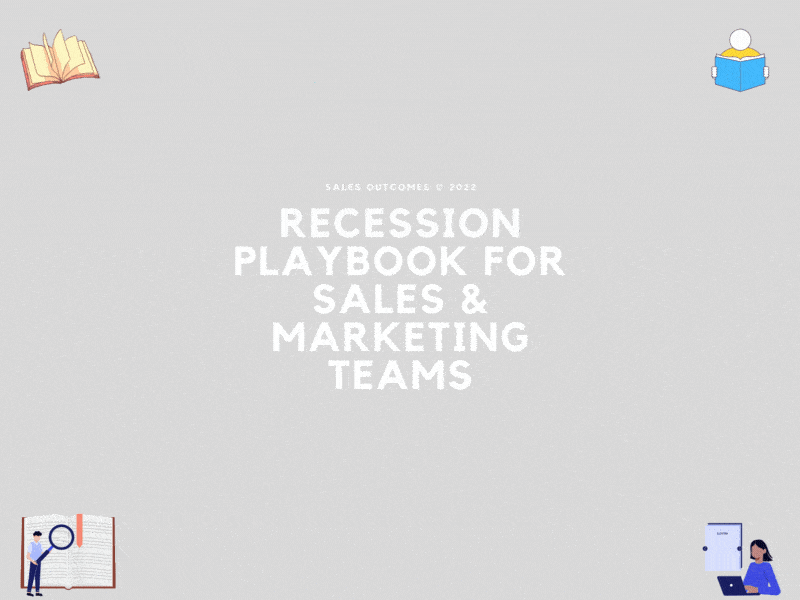Recession Playbook for Sales & Marketing Teams

A recession may loom, so ensure your sales and marketing teams are prepared.
Turbulent market conditions can be an opportunity for companies that prepare and a nightmare for those that don’t.
To give your company a competitive edge to thrive during a recession, develop a Recession Playbook for your marketing and sales organizations that focuses on the priorities and activities.
The Recession Playbook has three simple elements:
1 – Prioritize Customer Growth and Retention
Retaining customers should be one of the top priorities, as acquiring new customers can cost five to 25 times more than keeping those you already have.
However, retaining customers can be challenging during a recession as customers are more price-sensitive and, like your organization, are weighing what’s essential and what’s not. If your teams strive proactively to establish your solutions’ value, your company remains on the “essential provider” list.
Proactive Customer conversations should take a sharper focus.
It’s essential to ask customers questions to uncover potential challenges and opportunities. “How are your results tracking? How are your sales metrics looking compared to last year? How are your customers’ customers?”
Coach your teams to initiate dialogue while being prepared for the good and bad news. If a customer faces challenges that could impact your solutions, it’s better to engage sooner to help customers explore alternatives if that’s what is needed. Waiting for the customer to figure things out without you increases the risk they’ll defect.
2 – Sharpen Your Targeting Efforts
When the economy is buoyant, marketing and sales activities tend to drift from the target market and ideal customer profile.
The problem during a recession is budgets get reduced, yet revenue expectations often remain the same. If you can get your sales and marketing teams anchored back on your target market, it’s where marketing, prospecting, selling, and servicing are easiest.
Many organizations miss the boat on targeting for one simple reason – the CRM doesn’t contain target lists by each salesperson. To that end, sales leaders rarely have the opportunity to coach salespeople on attacking the target market. In turn, marketing teams don’t prioritize pursuing accounts that salespeople most want to engage.
3 – Leverage Technology Investments You’ve Already Made To Increase ROI
When it comes to sales and marketing technology, most companies find that they only leverage a small portion of the sales and marketing technology investments they’ve already made.
Research shows that the average company only utilizes about 20 percent of its technology. Even more frustrating is that this number has remained relatively unchanged for the past few years. So, you’re not alone if you do not see the ROI you want from your technology investments.
For starters, take a close look at how you use your sales and marketing technology. Are there any gaps in coverage or areas your organization could use more effectively? If so, make a plan to address those areas.
Keep an eye out for new technology that can help you boost your sales and marketing efforts. However, ensure you fully leverage your technology investments and see a positive ROI before you make additional investments.
The key to weathering a recession is having a plan before it hits. This simple Recession Playbook will prepare your teams to take action quickly and effectively.